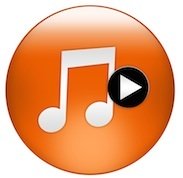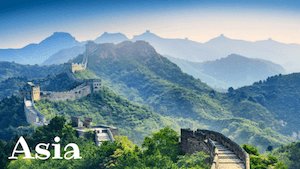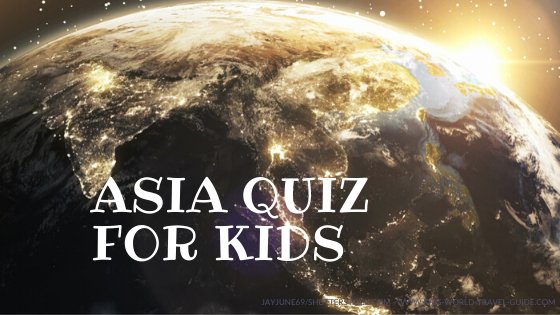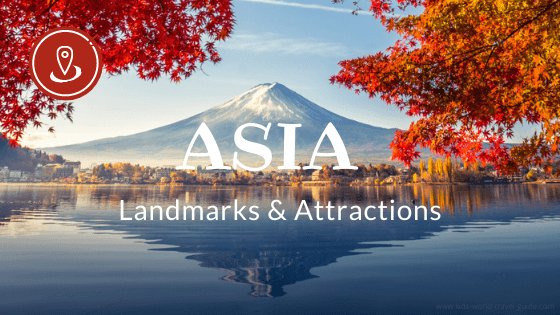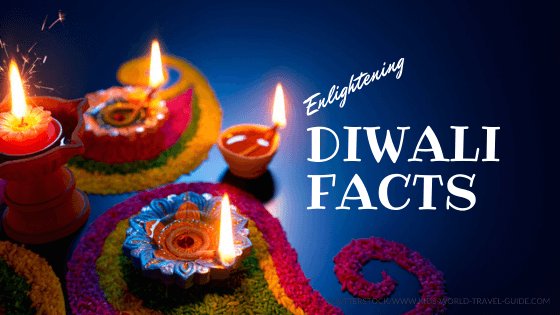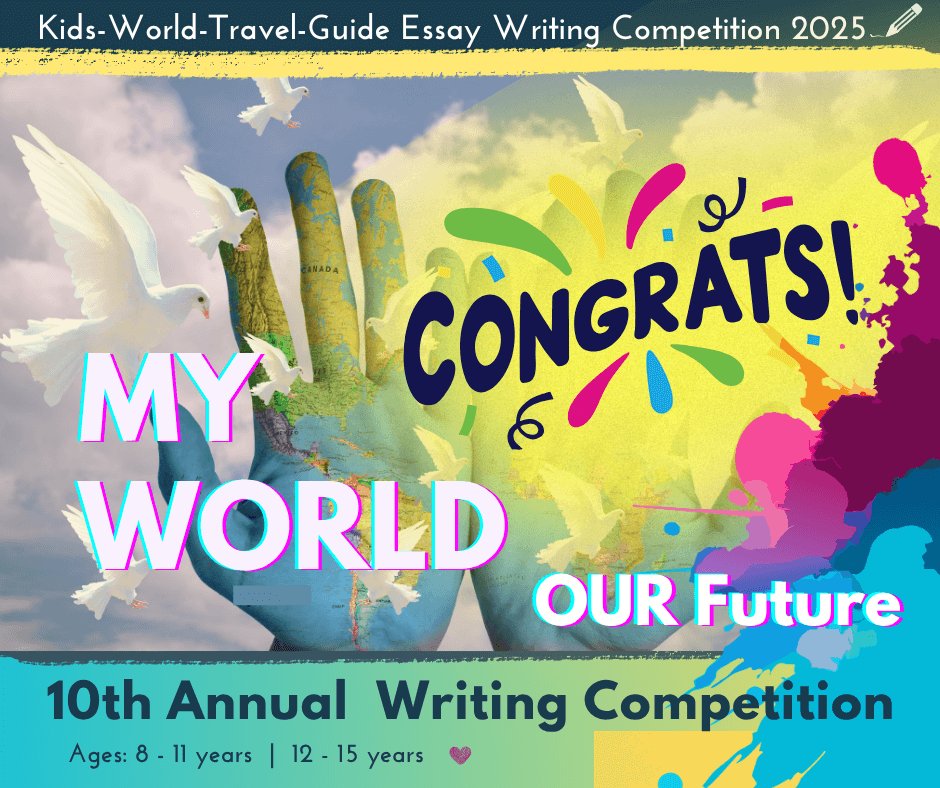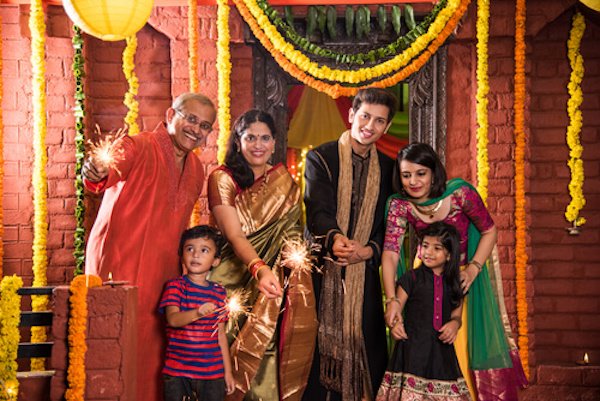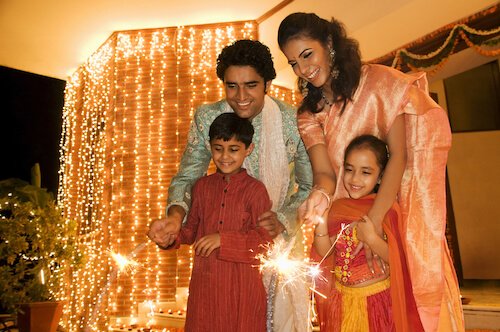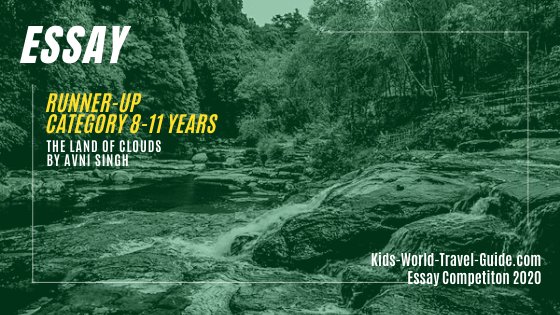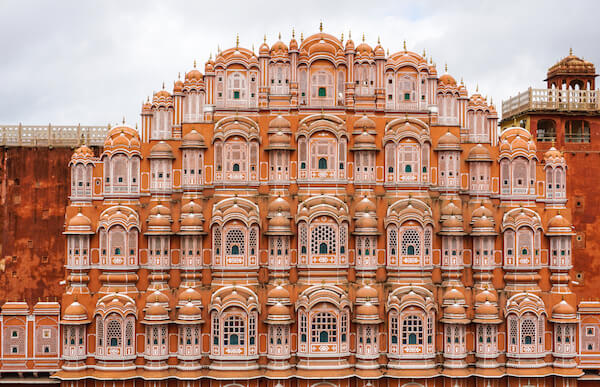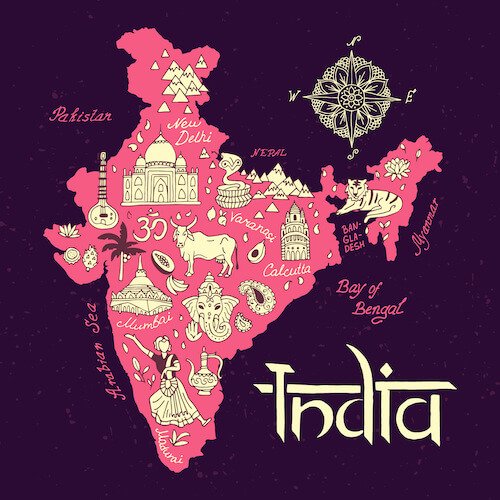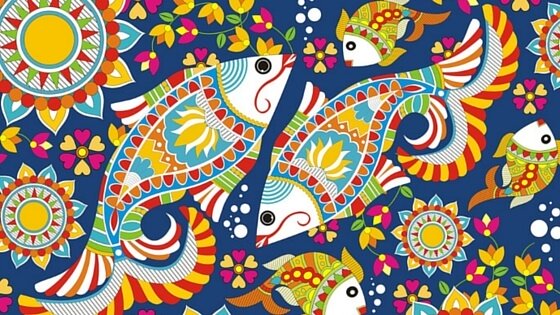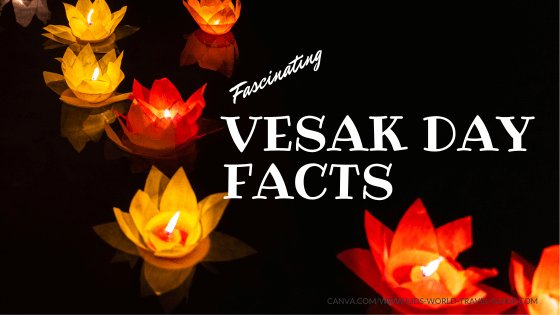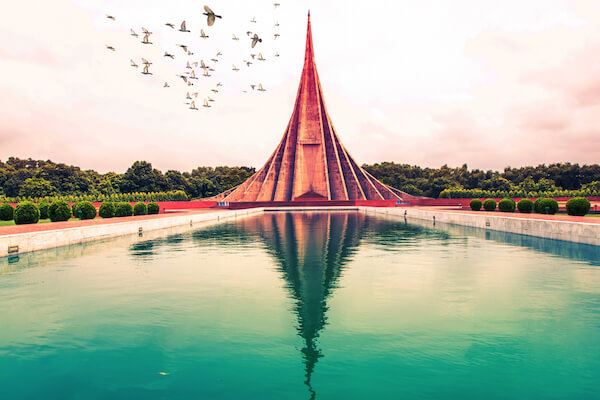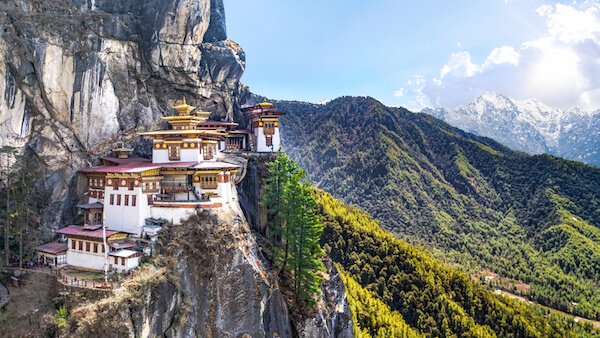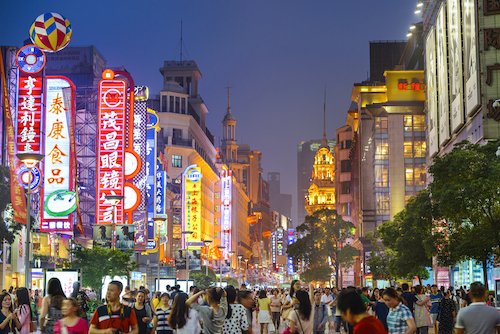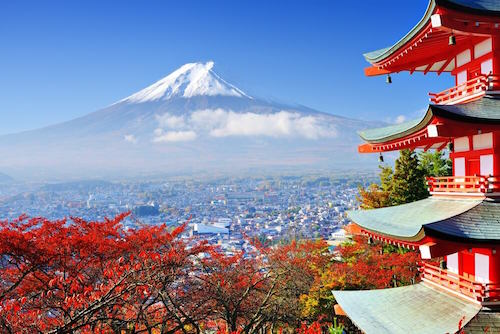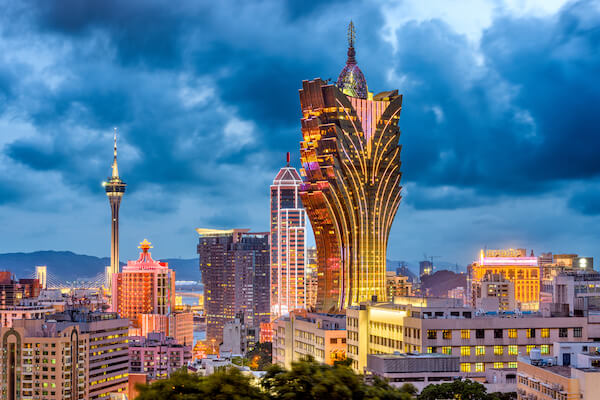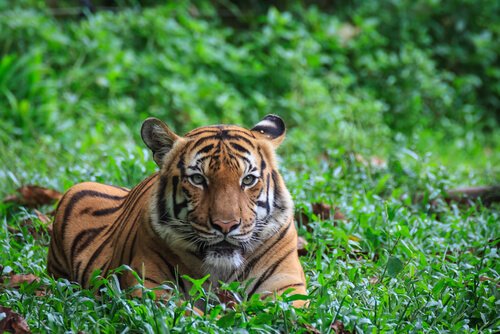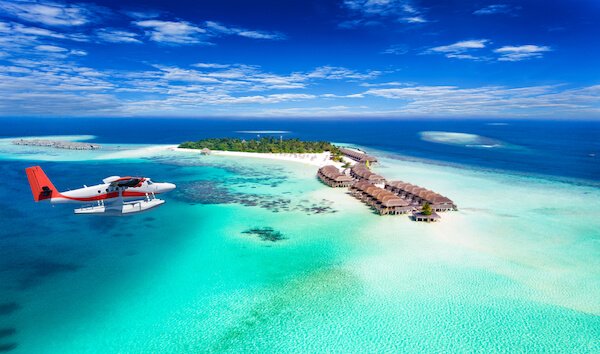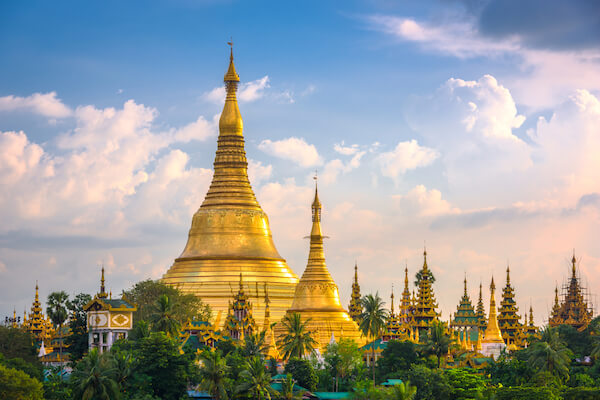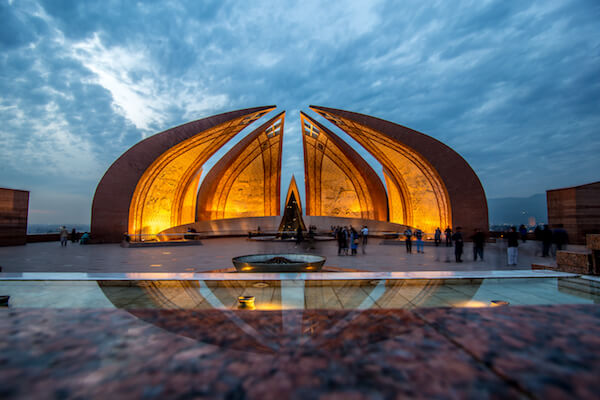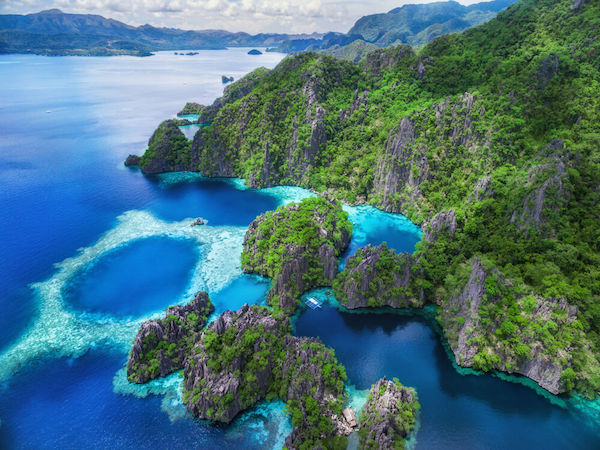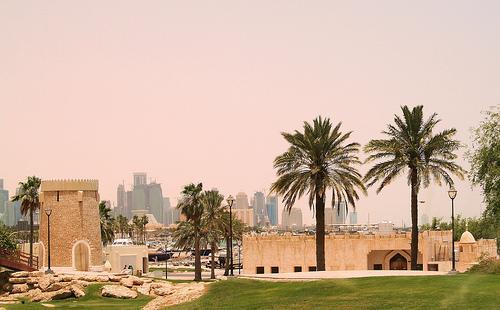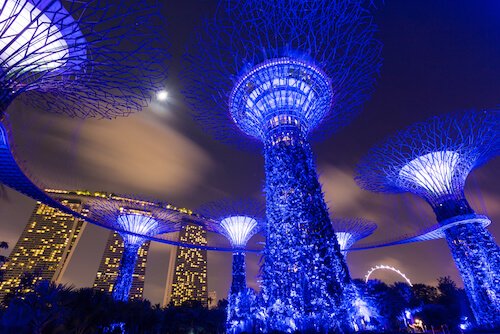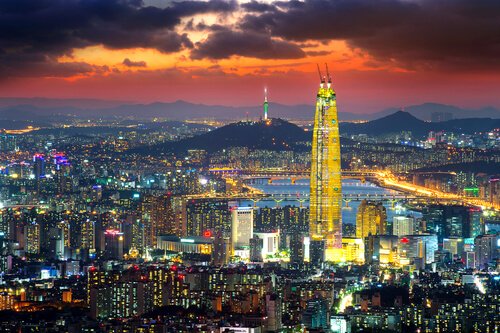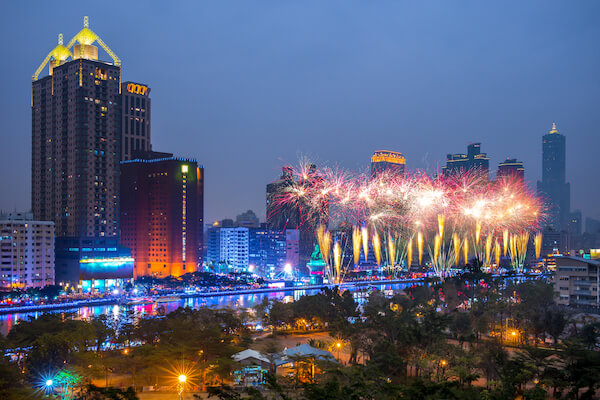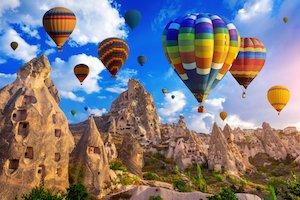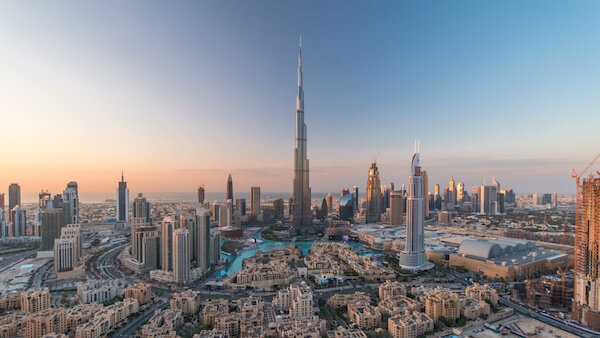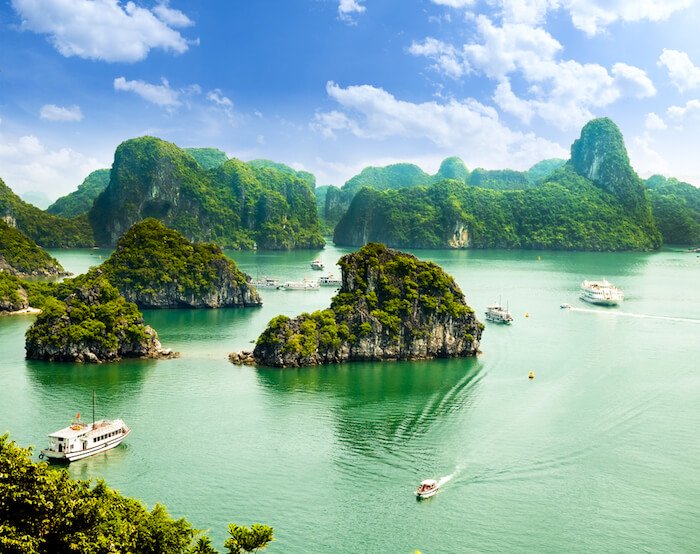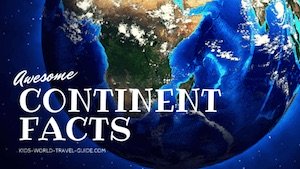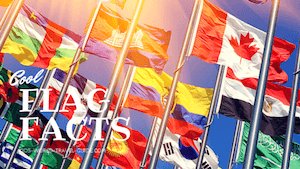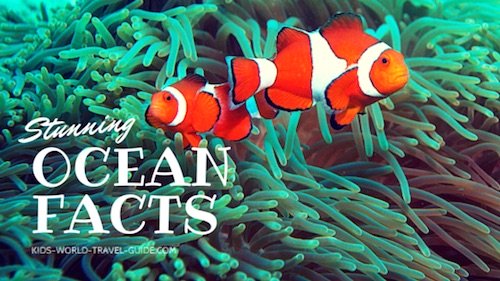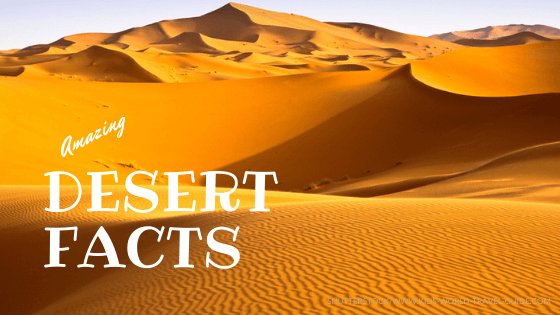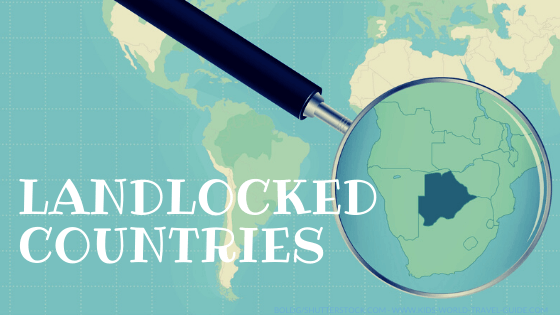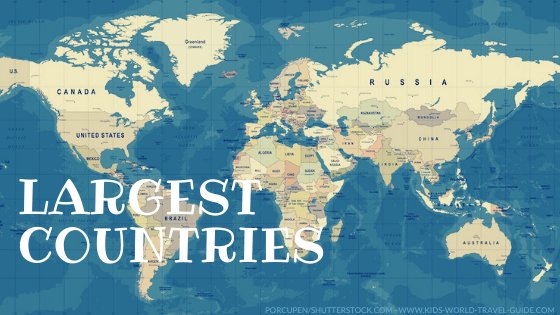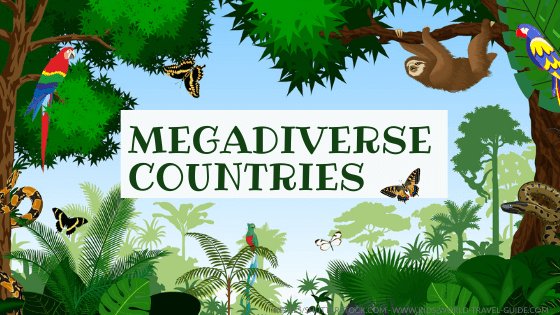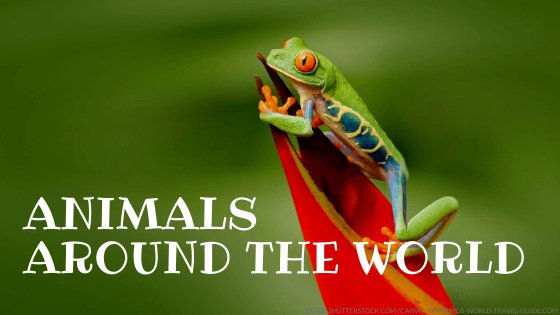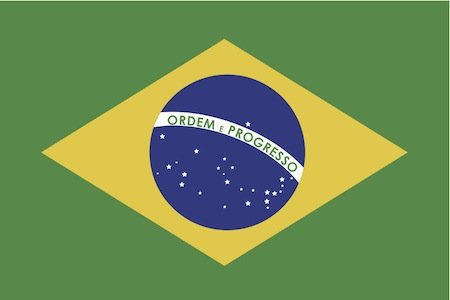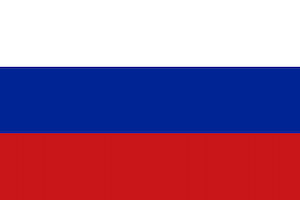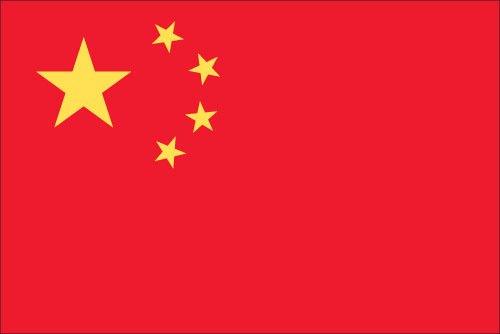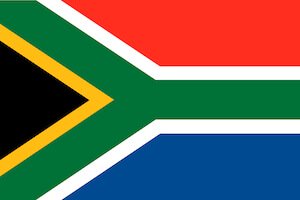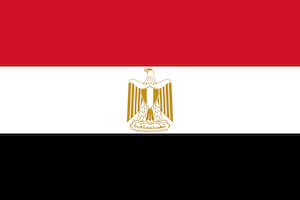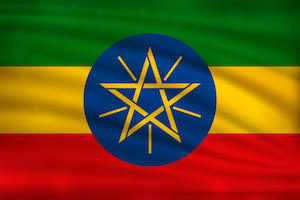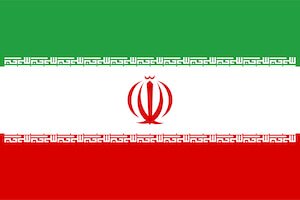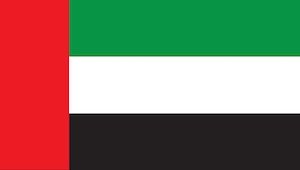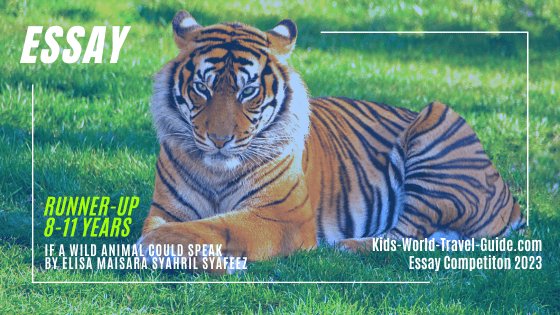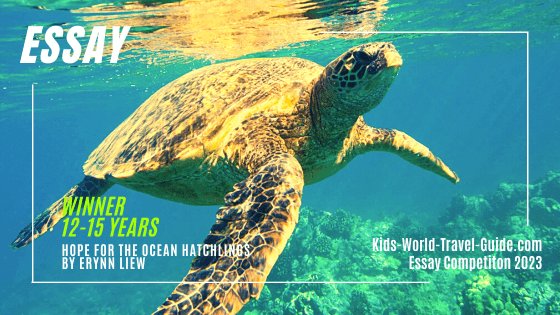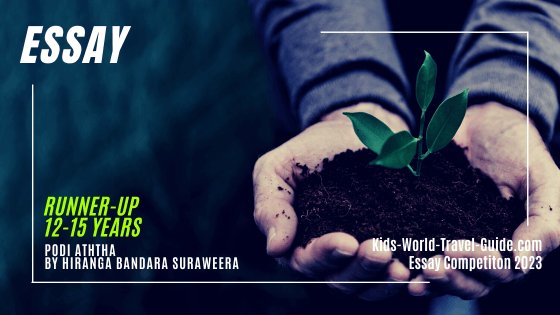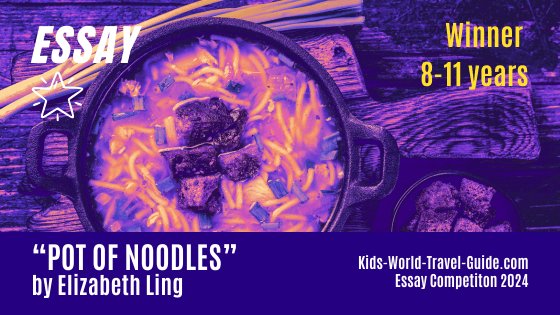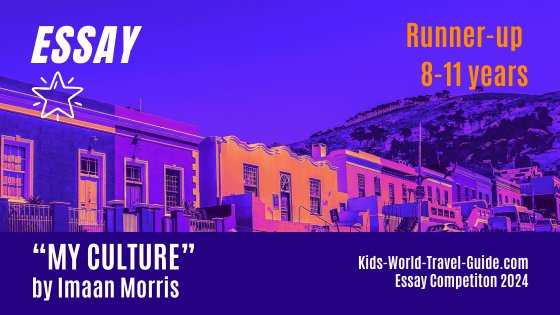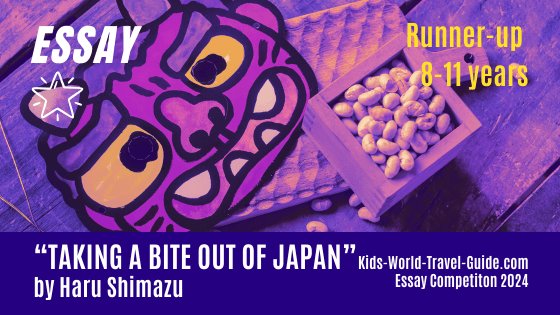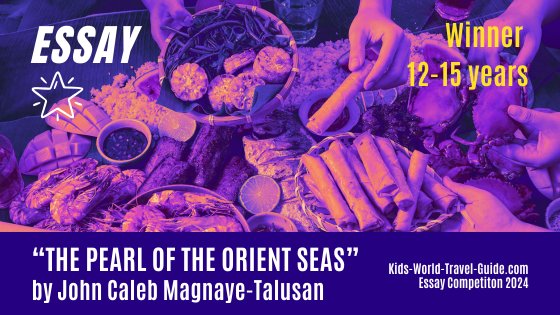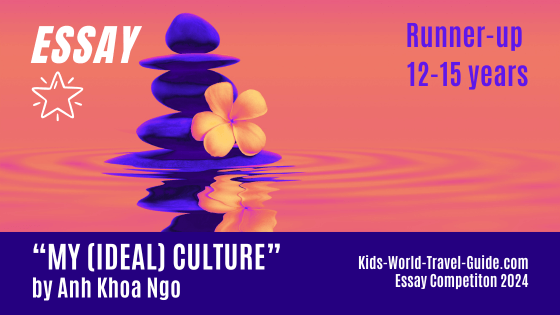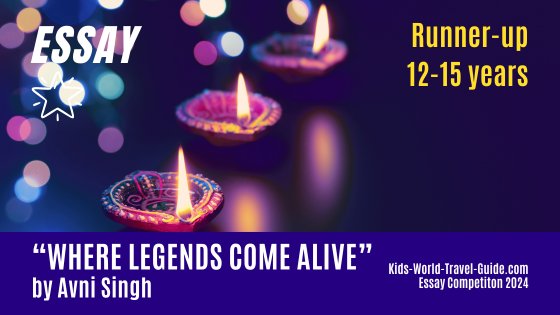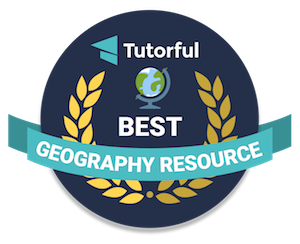- Homepage
- India
India for Kids
Here are some interesting facts about India for kids which were chosen and researched by children especially for children.
India Facts | Country Facts
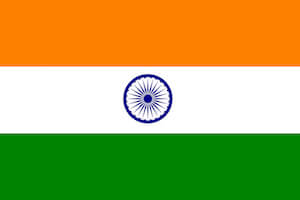 India Flag
India Flag- Population: 1.46 billion people live in India (2025)
- Capital city: New Delhi with about 34.6 million inhabitants
- Name: Republic of India or Bharat Ganrajya (in Hindi)
- Government: Democracy
- Languages: 22 official languages: Hindi is the most commonly spoken language and spoken by more than half of the Indians.
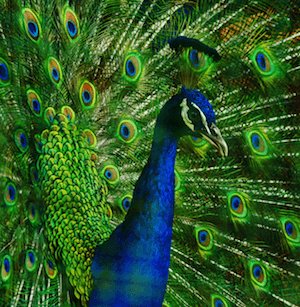 Peacock
Peacock- Religion: mainly Hindus (80.5%), but also Muslims (13.4%) and other faiths.
- Climate: Mainly tropical. Mostly high temperatures and dry winters, tropical monsoon season from June to September.
- Currency: 1 Indian rupee (INR) = 100 paise
- National Symbols: Lotus (national flower), tiger (national animal) and peacock (national bird).
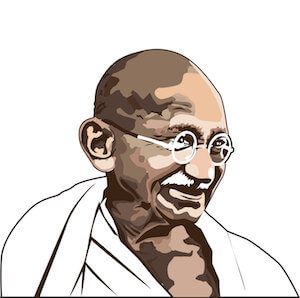 Mahatma Gandhi
Mahatma Gandhi- National Days: India has three national days: Republic Day, Independence Day and Gandhi's Birthday! India celebrates the anniversary of Mahatma Gandhi's birthday on 2 October as India's 'Father of the Nation' was born on this day in 1869. Gandhi led the Indian people into independence from the British rule. He inspired many people in other countries with his peaceful protest movement.
- Prime Minister: Narendra Modi
- History: Around 7000 BCE the first settlements were built in the area. The Indus Valley civilisation developed as the first urban culture in South Asia. In the 18th several European countries set up outposts in the region and the English East India company established many settlements along the coast and trading centres. 1857 saw a rebellion of the Indians against the British governors, after which Queen Victoria of England took over the crown rule of India and between 1858 and 1947, the British Raj (kingdom) was established in India. In 1947, India was divided into India and Pakistan. 15 August is celebrated in India as Independence Day.
India for Kids | India Geography
India is the seventh largest country in the world. India is slightly bigger than one third of the USA. The country is located on the Asian continent and it belongs to a region referred to as South Asia.
India is the most populous country in the world, housing about 18% of the world population. In other words, one in every six people on our planet lives in India!
The Himalayan mountains are located in the North of the country while the country on the peninsula is surrounded by the Indian Ocean.
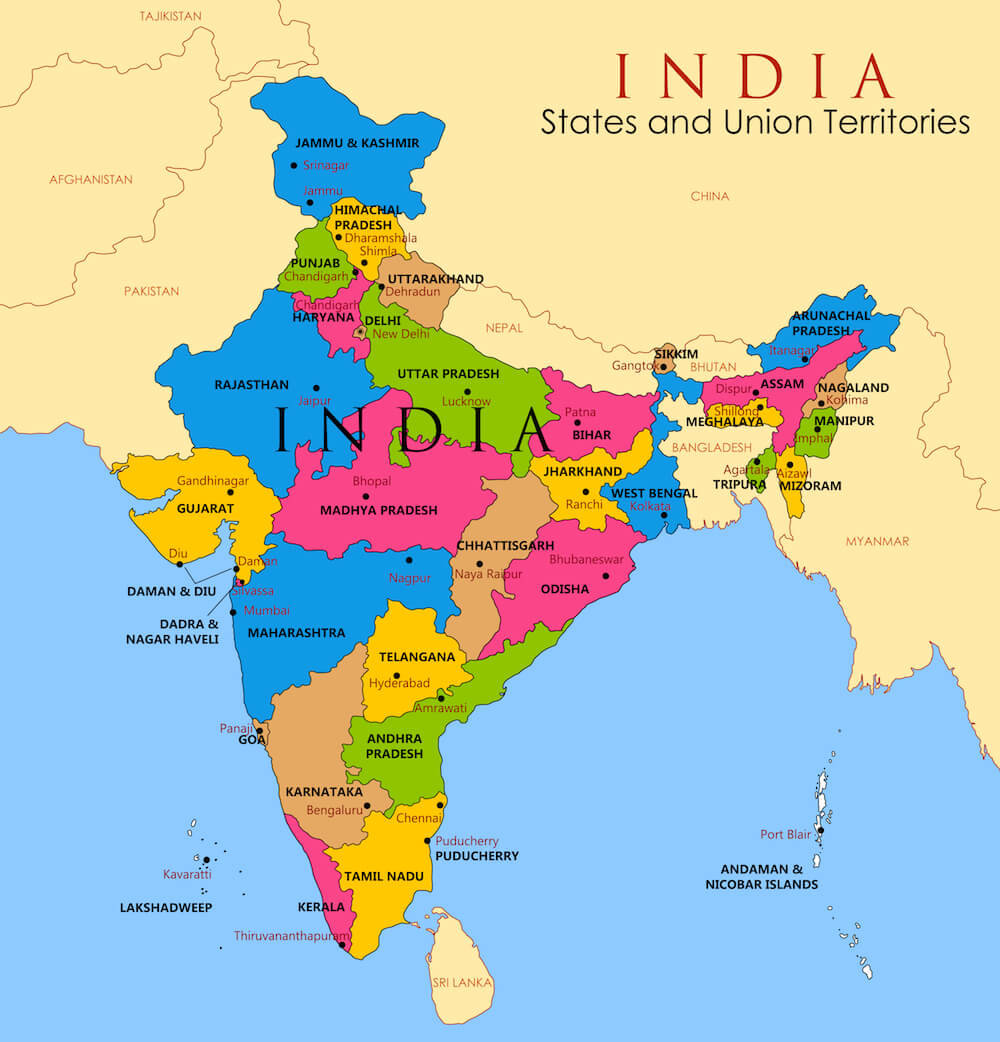 Map of India
Map of IndiaIndia borders seven countries: Afghanistan, Pakistan, China, Nepal, Bhutan, Myanmar and Bangladesh.
It takes a 8.5-hour flight from London/ UK to Delhi/ India, 14 hours from New York/ USA and 13 hours from Sydney/ Australia.
India for Kids
India Geography Superlatives
India has some the world's highest mountains and a large high-lying area in the southern part of the country, the Deccan plateau.
The highest mountain in India is the Kangchenjunga. This is also the third highest mountain in the world with 8,586 m/ 28,169 ft.
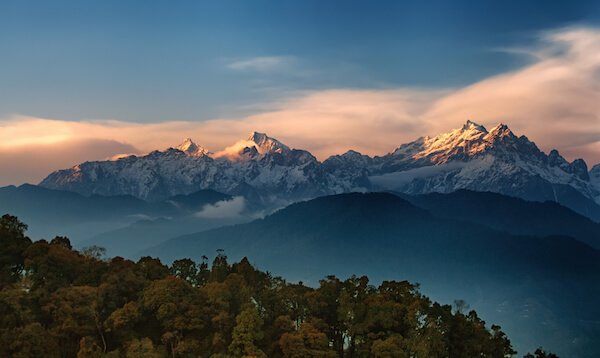 Kangchenjunga
KangchenjungaThe Thar Desert covers a large area in the north west of the country and forms a natural border between India and Pakistan. About three quarters of the desert are located in India.
The longest river in India is the Ganges River. This is the most sacred river to the Hindus.
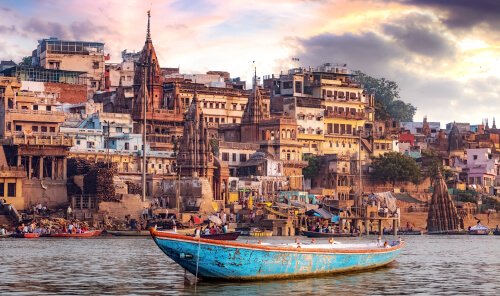 Varanasi at the Ganges River
Varanasi at the Ganges RiverThe largest lake in India is Vembanad Lake (also referred to as Kochi Lake) in Kerala. This lake is India's longest lake with almost 100 km/ 62 miles in length and known for its spectacular backwater scenery. At the widest point the lake is only 14 km/ 8.7 miles wide.
The Kerala Backwaters are a network of brackish lagoons, rivers and lakes of which Vembanad Lake is the largest. They have a unique ecosystem and is one of the world's unique wetlands.
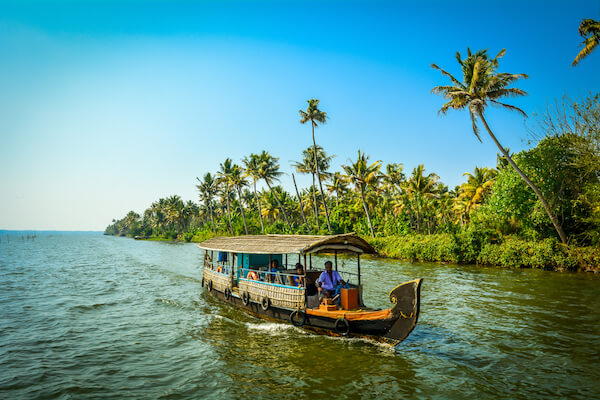 Lake Vembanad - image by niladrilovesphotography/shutterstock.com
Lake Vembanad - image by niladrilovesphotography/shutterstock.comDid you know that the name 'India' is derived from the river Indus? The Indus river flows through India and along the border to Pakistan into the Arabian Sea.
India for Kids
India Landmarks and Attractions
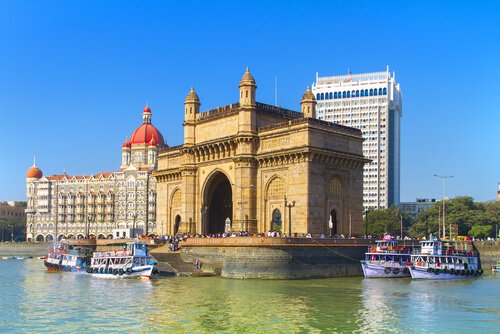 Mumbai Gateway to India
Mumbai Gateway to India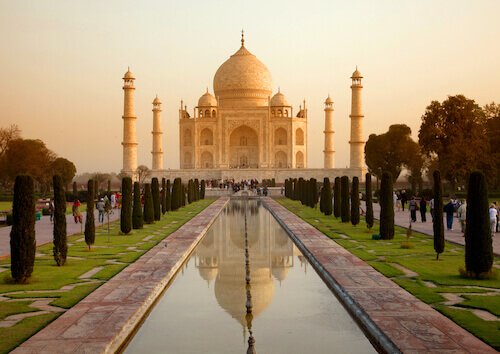 Taj Mahal in Agra
Taj Mahal in Agra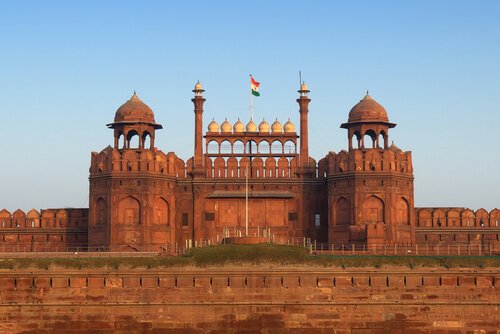 Red Fort in Delhi
Red Fort in Delhi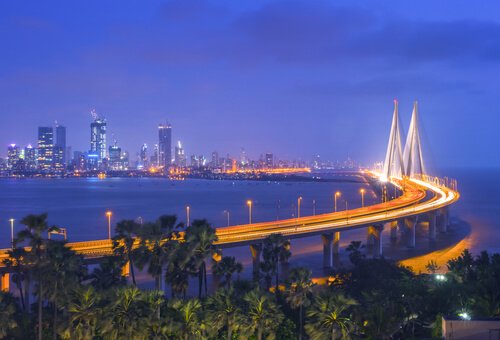 Rajiv Gandhi Sea Link in Mumbai
Rajiv Gandhi Sea Link in Mumbai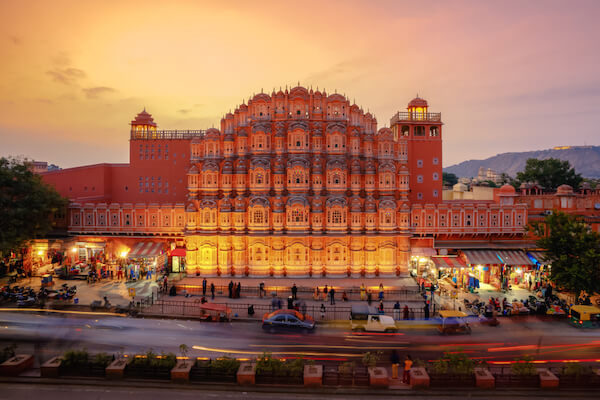 Hawa Mahal, Red Palace in Jaipur
Hawa Mahal, Red Palace in Jaipur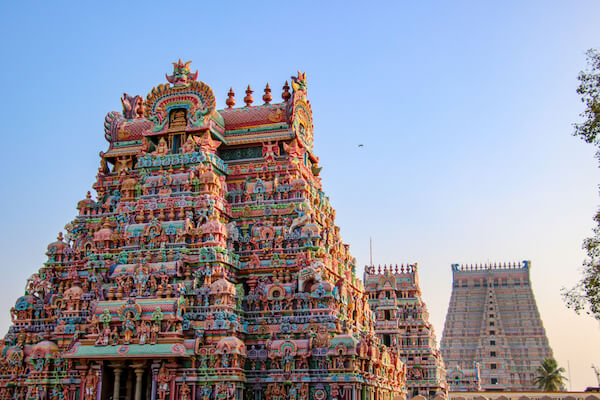 Sri Ranganathaswamy Temple - India's largest Hindu Temple
Sri Ranganathaswamy Temple - India's largest Hindu Temple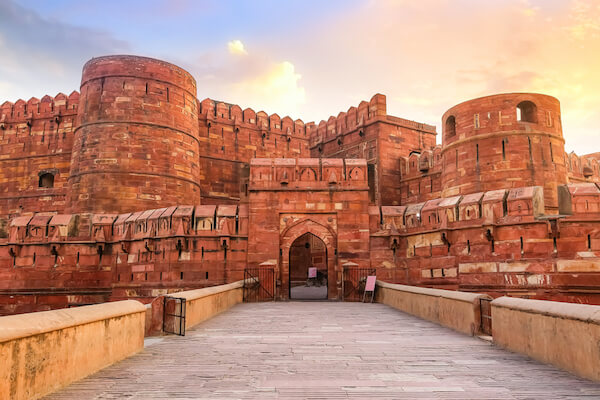 Fortress in Agra
Fortress in Agra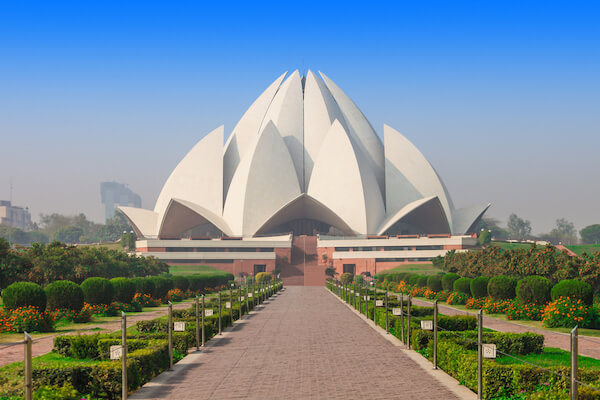 Lotus Temple - Baha'i House of Worship
Lotus Temple - Baha'i House of Worship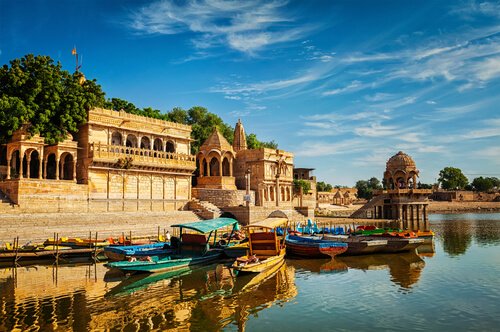 Gadi Sagar is an artificial lake in Rajasthan
Gadi Sagar is an artificial lake in Rajasthan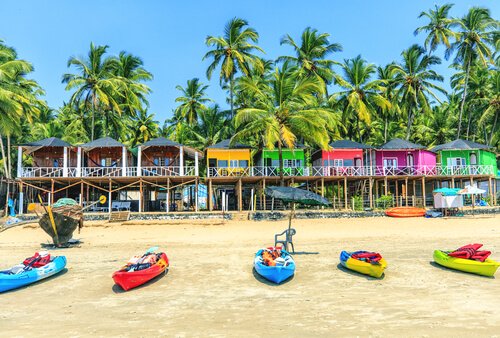 Palolem Beach in Goa
Palolem Beach in GoaIndia for Kids | Animals in India
India is home to many large mammals such as the snow leopard, the Indian rhinoceros, the Bengal tiger or the Asian elephant.
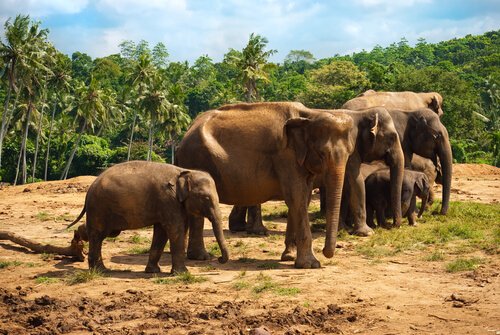 Asian elephants
Asian elephantsThere are also water buffalos and many different antelope species. Some species are endangered and threatened due to the rising population and settlements moving closer to wildlife habitats.
Cows are considered as sacred by the Hindus and thus these animals are highly respected and honoured as they symbolise strength and provide life-giving milk. So do not wonder when you see cows wandering about in the middle of the road or when somebody is bowing to a cow!
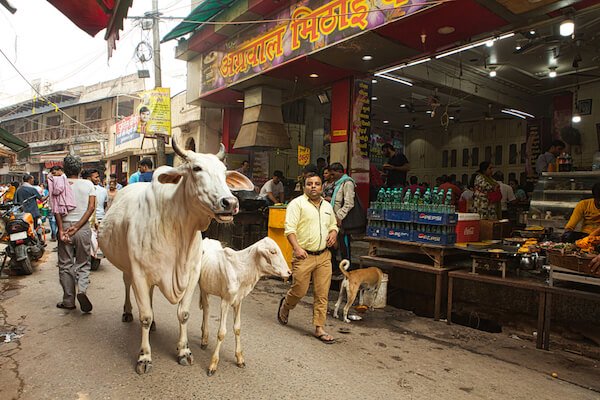 India Cows walking in a street in Uttar Pradesh - image by Piranhas Roy
India Cows walking in a street in Uttar Pradesh - image by Piranhas RoyIndia for Kids
India People | Indians
India is the most populous country in the world and has many big cities. However, about two thirds of the population still live in rural areas.
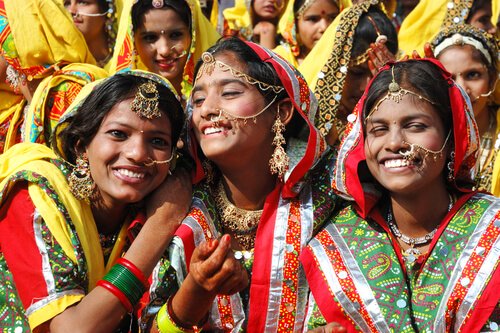 Indian girls at a festival in Rajasthan
Indian girls at a festival in RajasthanMost of the people in India live in the country's northern regions along the fertile banks of the Ganges river and the southern coastal regions.
India's biggest cities are:
- Delhi: 34 million
- Mumbai: 22 million
- Kolkata: 15 million
- Bangalore: 12 million
Tradition and social classes or 'castes' are still part of the society, although there are laws in place that make 'Untouchability' illegal and fortunately discrimination due to the caste-system is becoming less in the Indian society.
Family values are important in traditional families and arranged marriage still play a big part especially in rural regions.
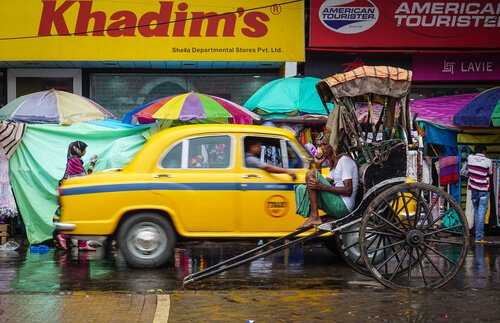 Street life in Kolkata
Street life in KolkataDid you know that in India, cars drive on the left side of the road as they do in the UK and Australia?
Road signs on national highways are in English and Hindi.
India for Kids | Indian economy
India is one of the founding members of BRICS and is amongst the world's top countries with a strong and growing economy. BRICS is the group of in total nine countries. There are the five countries: Brazil, Russia, India, China and South Africa plus the four countries that joined the organisation in 2024: Egypt, Ethiopia, Iran and United Arab Emirates.
India has the largest economy in South Asia. However, the country is also suffers high inequality and about one fifth of the population live below the poverty line. About half of the population works in the agricultural sector.
The country's main economic sectors are the service sector and agriculture. India is the world's top producer of milk, pulses, jute and the second largest producer of cotton, wheat and rice.
The main trading partners are China, the USA and the UAE.
Read more about the BRICS countries.
India for Kids | Indian Food
As India is a large and very diverse country, also the agricultural products are very different. Thus the food and cooking styles are different from region to region.
Indian staple food are rice, lentils, breads and spices. Further, fish and seafood at the coast and chicken, pork, beef and game meats depending on the region. Many dishes contain vegetables such as spinach, peas or mustard greens as well as fruit such as mango, pineapple or bananas.
Indian food is generally spiced a lot and some regions are known for extremely hot and spicy food. Commonly used spices are chilli and ginger, cardamon, cinnamon, cumin (jeera), coriander (dhania) and cloves. Many dishes also use yoghurt, cottage cheese or paneer (white unsalted cheese - you can see the paneer cubes in spinach sauce in the image below)
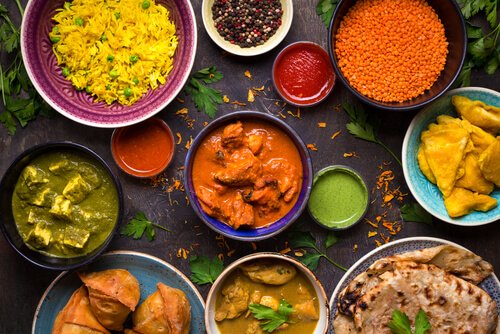 Variety of Indian dishes
Variety of Indian dishesTypical Indian food:
- curry: curries come in all guises and are made with lots of spices. The ingredients of the curries are chosen according to season and regional availability of products, so there will be fish curries in the southern state of Kerala, while the lamb curry, called Rogan Josh, is popular in the northern Kashmir region.
- butter chicken: rich and creamy chicken stew with tomatoes, onions and spices
- vindaloo: spicy meat (pork, lamb or chicken) marinated in vinegar mixed with potatoes
- samosas: crispy fried parcels filled with spicy meat or vegetables. They are often served with a mint sauce.
- biryani: rice dish with chicken and vegetables, herbs and spices
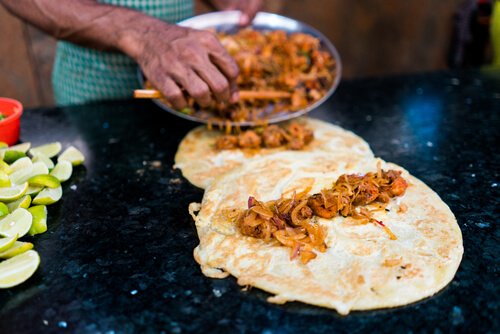 Roti at a street market
Roti at a street market- roti: a flat bread that filled with meat or vegetables. Rotis are also used with many dishes to scoop the sauces
- jalebi: deep-fried batter that is dipped in sweet sugary coating
- lassi: yoghurt-based drink, often spiced with cardamon or cumin and flavoured with fruit such as mango
Indians eat meat but remember that different faiths do not allow their followers to eat certain types of meat. Cows are considered holy by the Hindu, thus many Indians will not eat beef. Beef is even banned in several states!
Muslims do not eat pork, so in the northern regions where most Indian muslims live, pork will not be served.
Food is eaten by Indians traditionally with the right hand, the left hand is only used for serving oneself. However, many Indians today also use cutlery such as forks and spoons.
Did you know that...?
… the India Gate which stands in Delhi is a war memorial. It was build in remembrance of over 70,000 soldiers of the British Indian Army who died in the First World War.
The memorial is 42 m/ 132 ft. high and stands in the middle of a crossroad. The names of 13 218 dead soldiers are engraved in small letters the memorial.
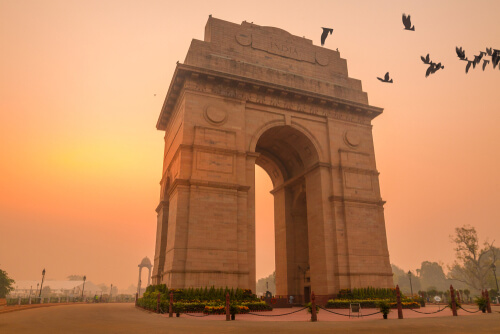 India Gate in New Delhi
India Gate in New DelhiIndia for Kids Resources
- Central Intelligence Agency. "India". CIA World Fact Book. Updated 29 September 2025. Last accessed 20 October 2025
- Kiddle. "Mahatma Gandhi Facts for Kids". Kiddle Encyclopedia. Updated 1 July 2019. Last accessed 20 October 2025
- National Portal of India. "India at a Glance". National Portal of India. Last accessed 20 October 2025
- National Portal of India. "India - National Symbols". National Portal of India. Last accessed 20 October 2025
Images on India for Kids: Indian girls by Kaetan/shutterstock.com, Kolkata street life by Phung D Nguyen/shutterstock.com, others from shutter stock.com, sxc.hu and own images.
Popular Pages
Go back from India for Kids to Kids-World-Travel-Guide Homepage
More about India
More about Countries and Territories in Asia
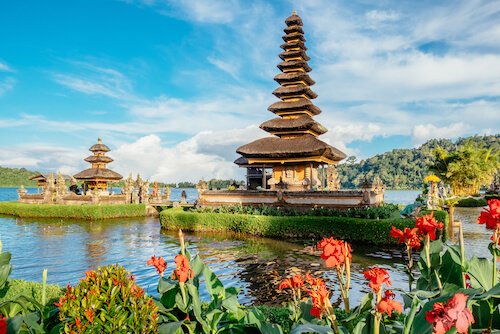 Indonesia
Indonesia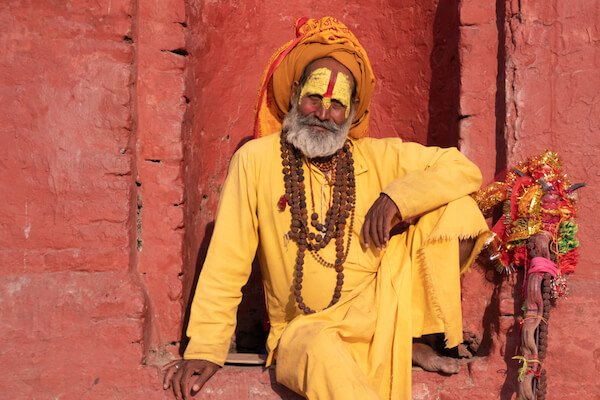 Nepal
Nepal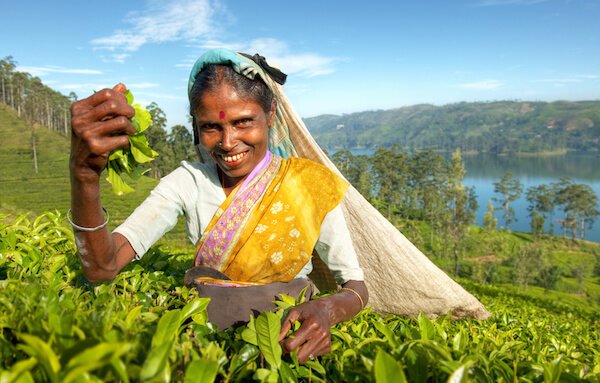 Sri Lanka
Sri Lanka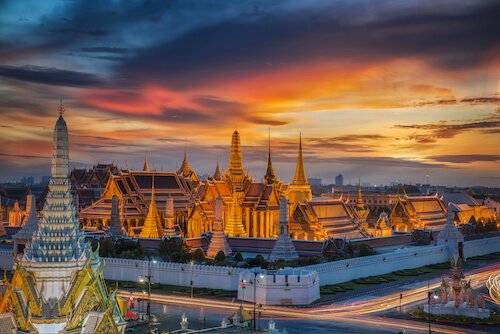 Thailand
ThailandDid you like what you read?

|
Share this page with your friends! Simply use the html code below. Copy and paste onto your website, blog or Facebook page: <a href="https://www.kids-world-travel-guide.com/india-for-kids.html">Kids World Travel Guide: India for Kids</a> |
